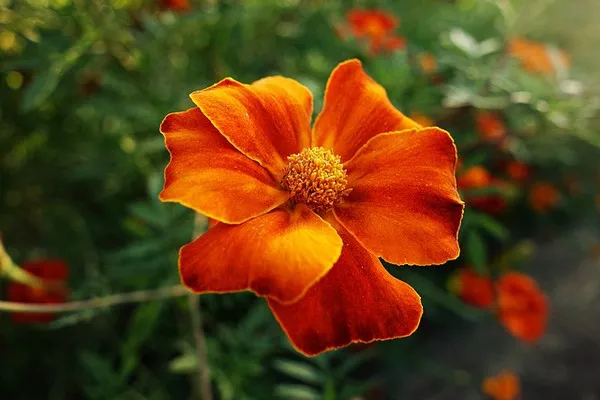Marigold flowers, scientifically known as Tagetes, have long captivated humanity with their vibrant colors, distinctive fragrance, and cultural significance. Throughout history, marigolds have held a special place in various societies, being revered not only for their aesthetic beauty but also for their symbolic meanings. From ancient civilizations to modern cultures, marigolds have been associated with diverse symbolism, encompassing themes of love, protection, death, and celebration. This essay delves into the rich tapestry of meanings attributed to marigold flowers across different cultures and contexts, shedding light on their symbolic significance.
Historical Context
The history of marigold symbolism can be traced back thousands of years, with evidence of their cultivation dating back to ancient civilizations such as the Aztecs, Greeks, and Egyptians. In Aztec culture, marigolds held sacred significance, being associated with the sun god, Tonatiuh, and used in religious ceremonies and rituals. The Aztecs believed that marigold flowers had the power to guide the spirits of the dead back to the earthly realm during the annual festival of Dia de los Muertos, or Day of the Dead. Similarly, in ancient Greek mythology, marigolds were linked to the goddess Aphrodite, symbolizing her beauty and grace.
Symbolism in Different Cultures
1. Love and Affection: In many cultures, marigolds are regarded as symbols of love and affection. Their bright, cheerful blooms are often used in floral arrangements for weddings, anniversaries, and other romantic occasions. In Victorian England, marigolds were a popular choice for bouquets, representing undying love and devotion.
2. Protection and Healing: Marigolds have also been associated with protective and healing properties. In medieval Europe, marigold flowers were believed to ward off evil spirits and provide protection against witchcraft and black magic. Additionally, marigold extracts have been used in traditional medicine for their anti-inflammatory and antiseptic properties.
3. Death and Remembrance: Perhaps one of the most well-known associations of marigolds is with death and remembrance. In Mexican culture, marigolds play a central role in the celebration of Dia de los Muertos, where they are used to adorn altars and gravesites as offerings to the deceased. The vibrant orange and yellow hues of marigold blooms are believed to attract the spirits of loved ones, guiding them back to the world of the living for a brief visit.
4. Festivity and Celebration: Marigolds are often associated with festivities and celebrations, particularly in Indian culture. During the Hindu festival of Diwali, marigold flowers are used to decorate homes and temples, symbolizing prosperity and good fortune. The bright colors of marigold garlands add to the festive atmosphere, bringing joy and happiness to the occasion.
5. Resilience and Endurance: Due to their hardy nature and ability to thrive in various environmental conditions, marigolds are sometimes seen as symbols of resilience and endurance. Their robust blooms withstand heat, drought, and pests, serving as a reminder of the strength and resilience of the human spirit.
Literary and Cultural References
Marigolds have also made their mark in literature and popular culture, appearing in poems, novels, and works of art. One notable example is the short story “Marigolds” by Eugenia Collier, which explores themes of poverty, innocence, and hope through the lens of a young girl’s experience in rural America during the Great Depression. The titular flowers serve as a symbol of fleeting beauty and resilience in the face of adversity.
In addition to literature, marigolds have been featured prominently in visual arts, including paintings, sculptures, and films. The vibrant colors and intricate patterns of marigold blooms have inspired countless artists throughout history, serving as a source of inspiration and creativity.
Conclusion
In conclusion, marigold flowers hold a rich tapestry of symbolism that transcends time and culture. From ancient civilizations to modern societies, marigolds have been revered for their beauty, fragrance, and diverse symbolic meanings. Whether representing love and affection, protection and healing, death and remembrance, or festivity and celebration, marigolds continue to captivate the human imagination and serve as enduring symbols of hope, resilience, and the cycle of life. As we contemplate the significance of marigold flowers, we are reminded of the profound connections between nature, culture, and the human experience.


